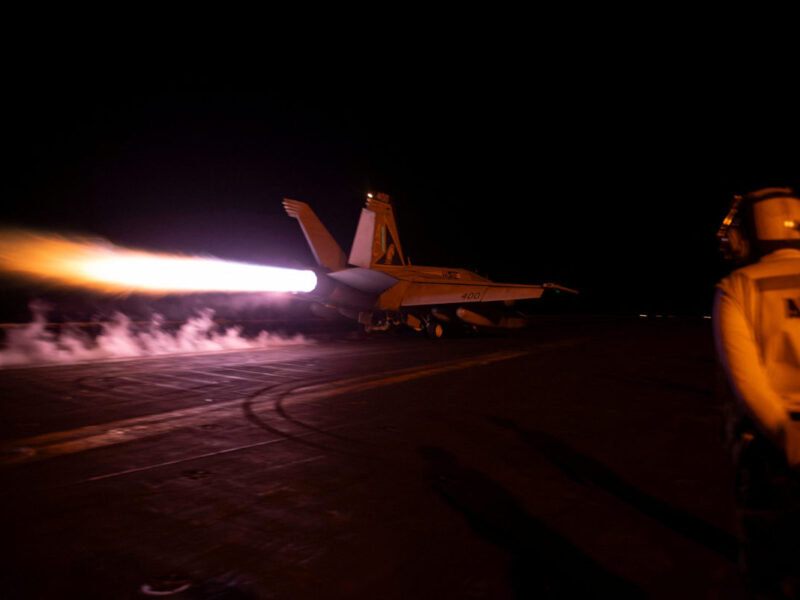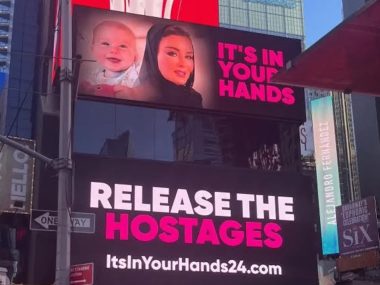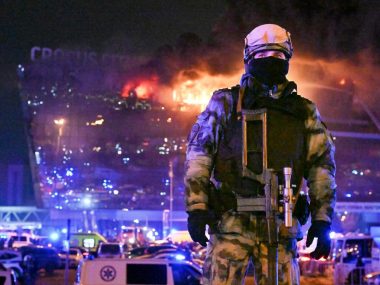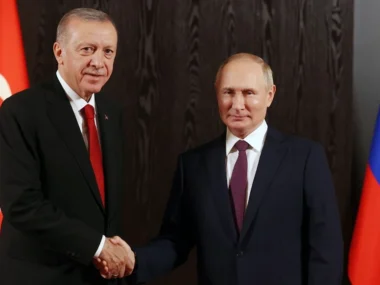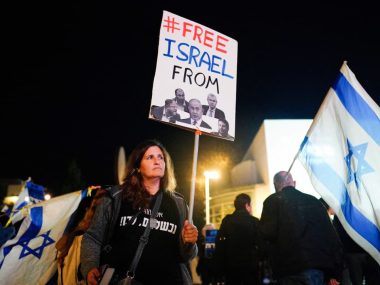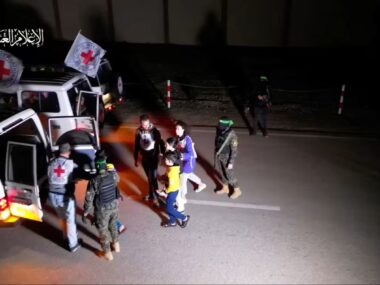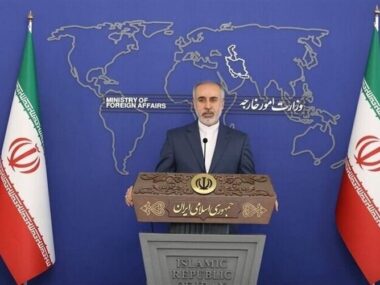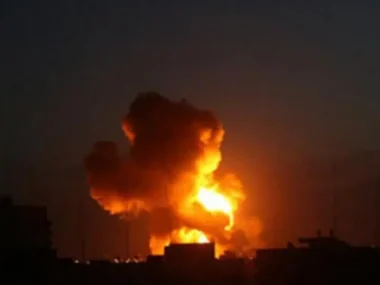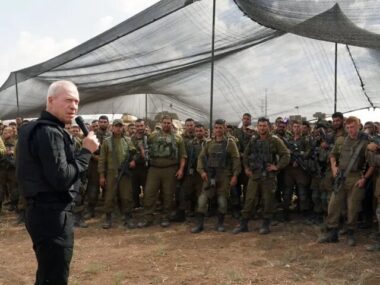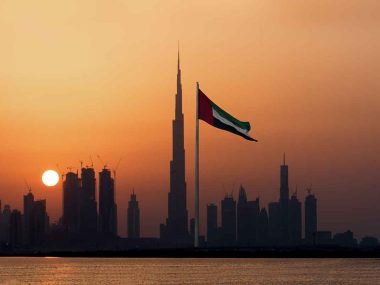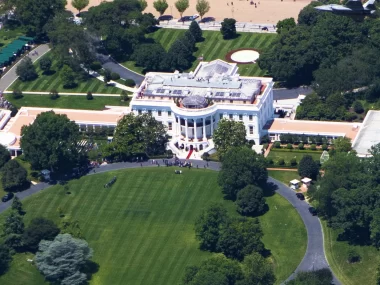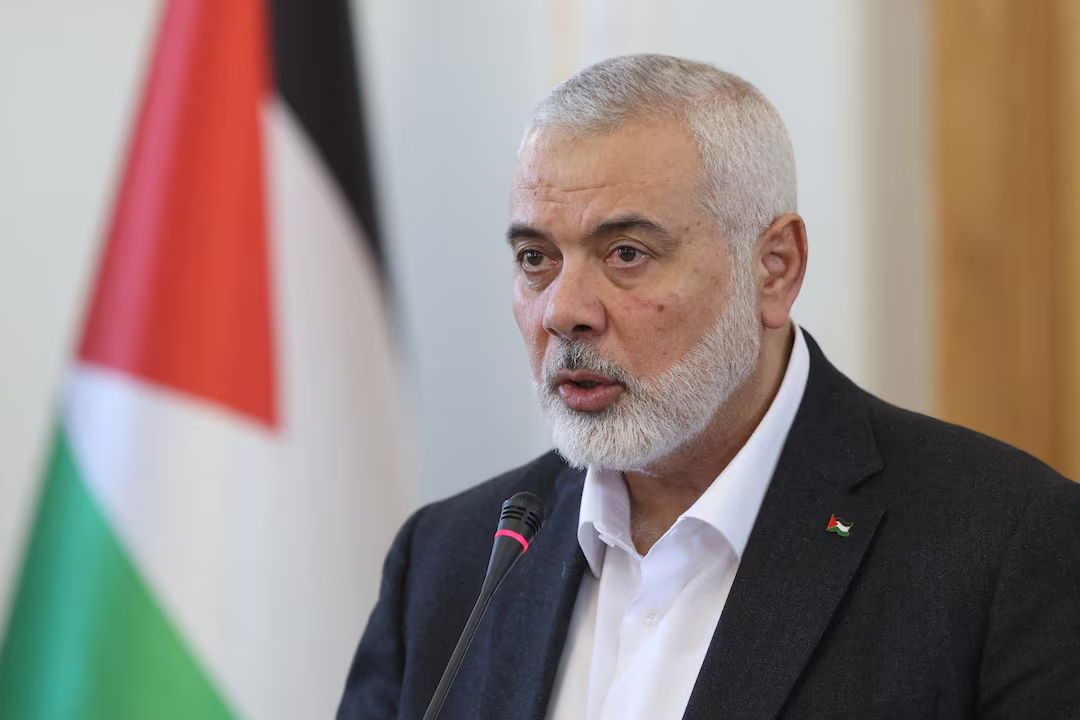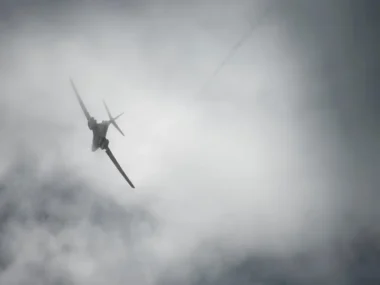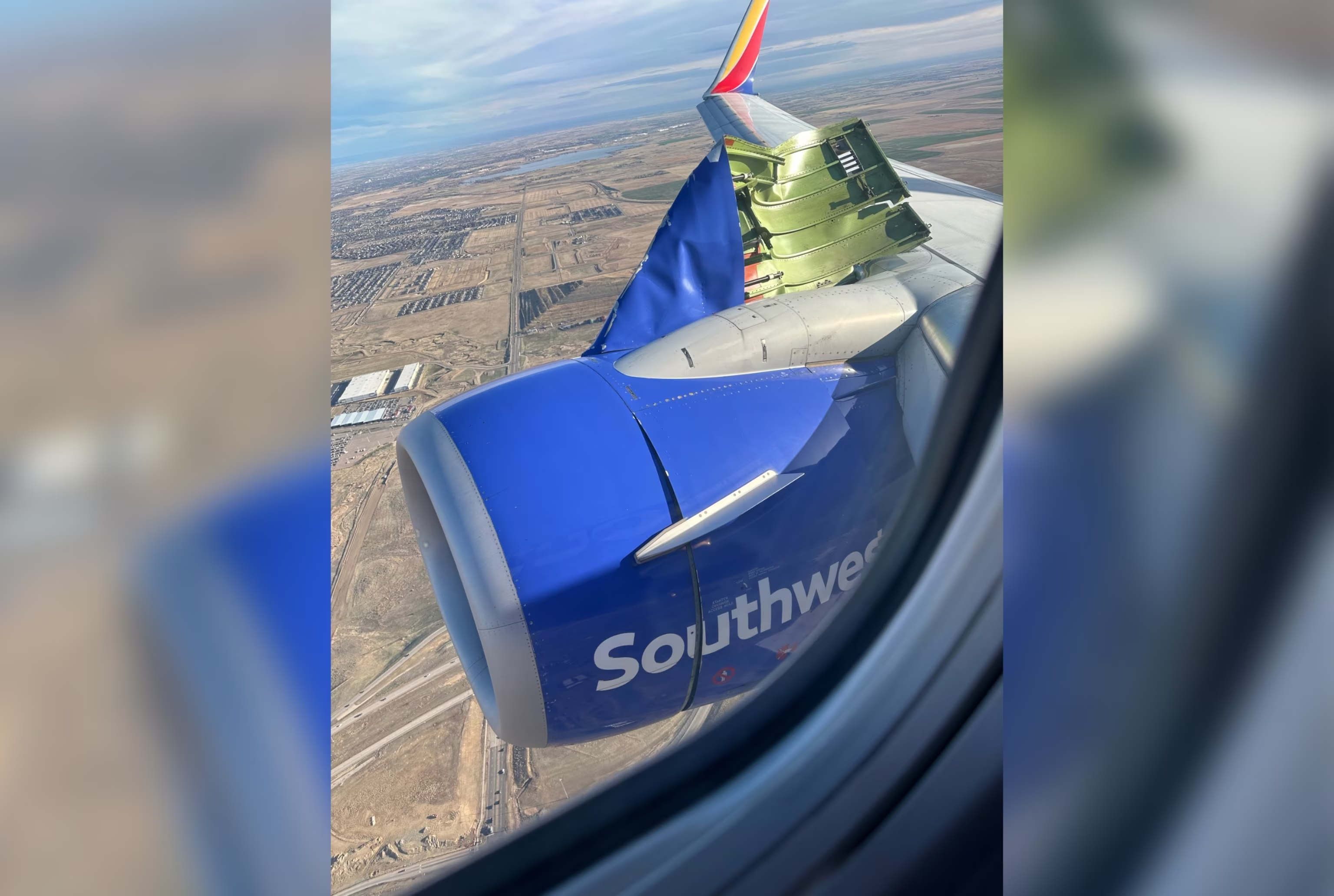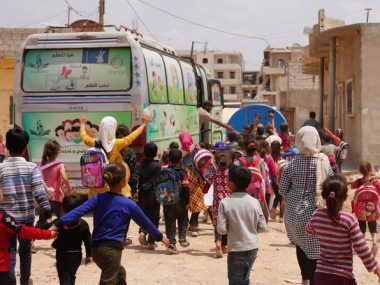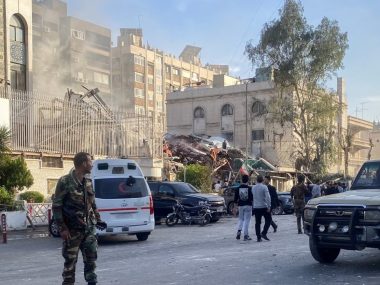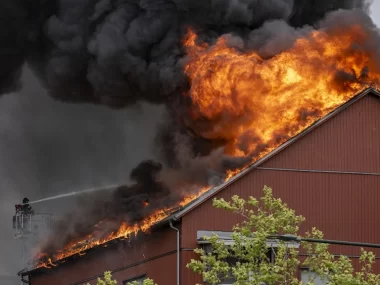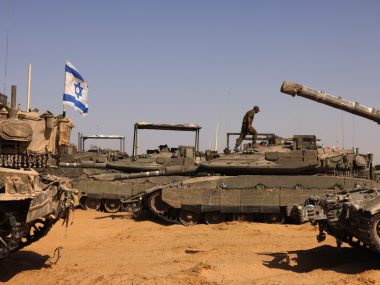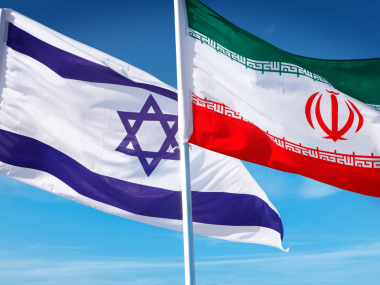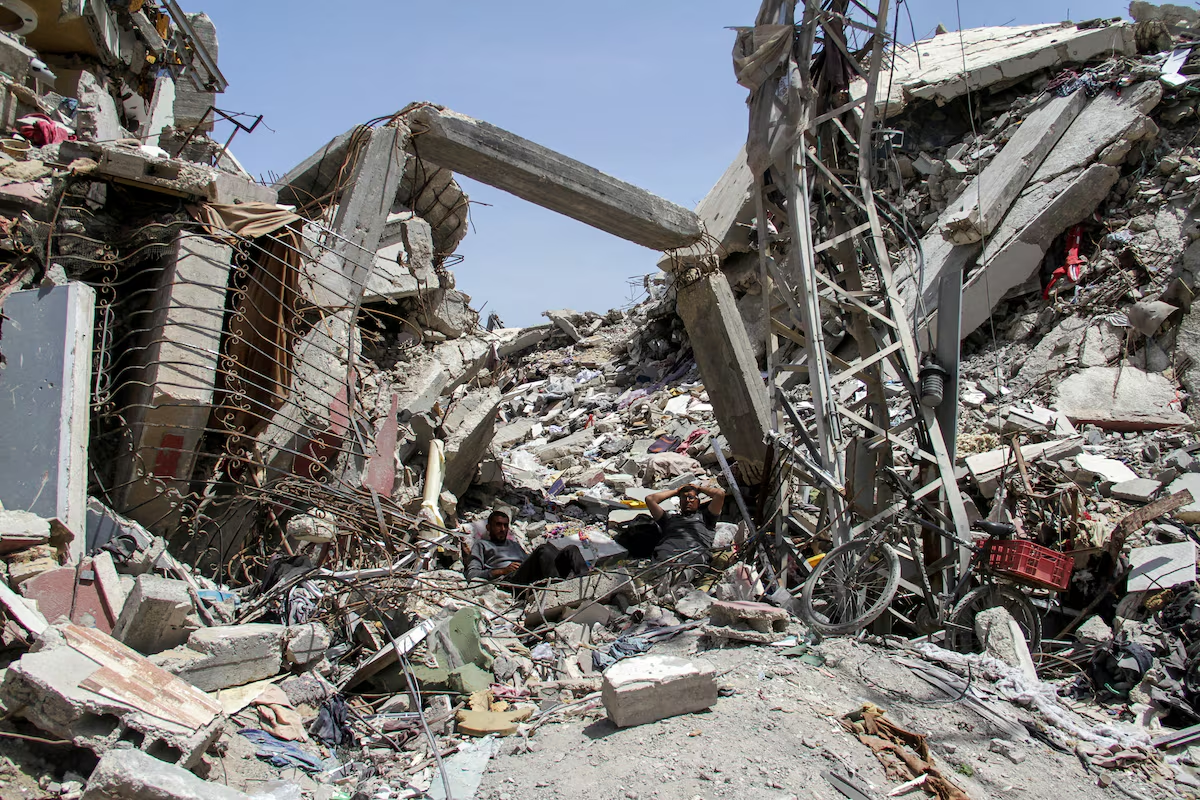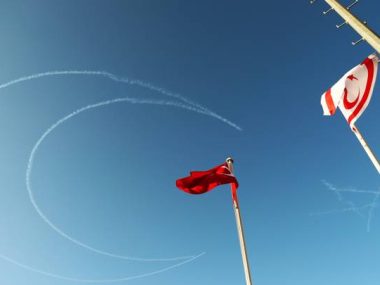|
Neubauer Coporation
Getting your Trinity Audio player ready...
|
U.S. attacks on groups backed by Iran
On Friday, the U.S. struck Iran-backed armed groups in Iraq and Syria in retaliation for the killing of three American soldiers at a U.S. base on the Syria-Jordan border. At the same time, Washington emphasized that it doesn’t want to escalate the conflict with Iran into outright war.
To date, the militias have not struck back, indicating that they don’t want all-out war with the U.S. either.
Why the U.S. is in the region
U.S. troops maintain a presence in the area to fight the Islamic State group. They returned to Iraq in 2014 after the extremists overran much of the country’s north and started a genocidal campaign against the Yazidis, a religious minority. U.S. forces are also present in Syria, where they work with Kurdish-led fighters to keep pressure on IS, as well as in Jordan, a long-standing Western ally. The U.S. rushed additional warships to the region after Hamas’ attack on Israel on Oct. 7 and the start of the war in Gaza to deter Iran and its clients from further escalation.
Strikes on Yemen’s Houthi rebels over Red Sea attacks
Separately, American and British forces have repeatedly struck Houthi rebels in Yemen, who are also backed by Iran. This was in response to persistent Houthi missile and drone attacks on international shipping in the Red Sea, one of the world’s most important shipping lanes.
U.S. and UK hit Yemen’s Houthis with new strikes in retaliation for Iran-backed attacks
The United States and Britain struck 36 Houthi targets in Yemen on Saturday in a second wave of assaults meant to further disable Iran-backed groups that have relentlessly attacked American and international interests in the wake of the Israel-Hamas war. But Washington once more did not directly target Iran as it tries to find a balance between a forceful response and intensifying the conflict.
The latest strikes against the Houthis were launched by U.S. warships and American and British fighter jets. The strikes follow an air assault in Iraq and Syria on Friday that targeted other Iranian-backed militias and the Iranian Revolutionary Guard in retaliation for the drone strike that killed three U.S. troops in Jordan last weekend.
The Houthi targets were in 13 different locations and were struck by U.S. F/A-18 fighter jets from the USS Dwight D. Eisenhower aircraft carrier, by British Typhoon FGR4 fighter aircraft and by the Navy destroyers USS Gravely and the USS Carney firing Tomahawk missiles from the Red Sea, according to U.S. officials and the U.K. Defense Ministry. The U.S. officials were not authorized to publicly discuss the military operation and spoke on condition of anonymity.
The U.S. warned that its response after the soldiers’ deaths at the Tower 22 base in Jordan last Sunday would not be limited to one night, one target or one group. While there has been no suggestion the Houthis were directly responsible, they have been one of the prime U.S. adversaries since Hamas attacked Israel on Oct. 7, killing more than 1,200 people and taking about 250 hostages. The Health Ministry in Hamas-ruled Gaza said that more than 26,000 people have been killed and more than 64,400 wounded in the Israeli military operation since the war began.
The Houthis have been conducting almost daily missile or drone attacks against commercial and military ships transiting the Red Sea and Gulf of Aden and they have made clear that they have no intention of scaling back their campaign despite pressure from the American and British campaign.
Mohammed al-Bukhaiti, a Houthi official, said “military operations against Israel will continue until the crimes of genocide in Gaza are stopped and the siege on its residents is lifted, no matter the sacrifices it costs us.” He wrote online that the “American-British aggression against Yemen will not go unanswered, and we will meet escalation with escalation.”
The Biden administration has indicated that this is likely not the last of its strikes. The U.S. has blamed the Jordan attack on the Islamic Resistance in Iraq, a coalition of Iranian-backed militias. Iran has tried to distance itself from the drone strike, saying the militias act independently of its direction.
Defense Secretary Lloyd Austin said in a statement that the military action, with support from Australia, Bahrain, Canada, Denmark, the Netherlands, and New Zealand, “sends a clear message to the Houthis that they will continue to bear further consequences if they do not end their illegal attacks on international shipping and naval vessels.”
He added: “We will not hesitate to defend lives and the free flow of commerce in one of the world’s most critical waterways.”
The Defense Department said the strikes targeted sites associated with the Houthis’ deeply buried weapons storage facilities, missile systems and launchers, air defense systems, radars and helicopters. The British military said it struck a ground control station west of Yemen’s capital, Sanaa, that has been used to control Houthi drones that have launched against vessels in the Red Sea.
President Joe Biden was briefed on the strikes before he left Delaware on Saturday for a West Coast campaign trip, according to an administration official.
The latest strikes marked the third time the U.S. and Britain had conducted a large joint operation to strike Houthi weapon launchers, radar sites and drones. The strikes in Yemen are meant to underscore the broader message to Iran that Washington holds Tehran responsible for arming, funding and training the array of militias — from Hezbollah in Lebanon, Hamas in Gaza, the Islamic Resistance in Iraq and the Houthis in Yemen — who are behind attacks across the Mideast against U.S. and international interests.
Video shared online by people in Sanaa included the sound of explosions and at least one blast was seen lighting up the night sky. Residents described the blasts as happening around buildings associated with the Yemeni presidential compound. The Houthi-controlled state-run news agency, SABA, reported strikes in al-Bayda, Dhamar, Hajjah, Hodeida, Taiz and Sanaa provinces.
Hours before the latest joint operation, the U.S. took another self-defense strike on a site in Yemen, destroying six anti-ship cruise missiles, as it has repeatedly when it has detected a missile or drone ready to launch. The day before the strikes the U.S. destroyer Laboon and F/A-18s from the Eisenhower shot down seven drones fired from Houthi-controlled areas of Yemen into the Red Sea and the destroyer Carney shot down a drone fired in the Gulf of Aden and U.S. forces took out four more drones that were prepared to launch.
The Houthis’ attacks have led shipping companies to reroute their vessels from the Red Sea, sending them around Africa through the Cape of Good Hope — a much longer, costlier and less efficient passage. The threats also have led the U.S. and its allies to set up a joint mission where warships from participating nations provide a protective umbrella of air defense for ships as they travel the critical waterway that runs from the Suez Canal down to the Bab el-Mandeb Strait.
During normal operations about 400 commercial vessels transit the southern Red Sea at any given time.
In the wake of the strikes Friday in Iraq and Syria, Hussein al-Mosawi, spokesperson for Harakat al-Nujaba, one of the main Iranian-backed militias in Iraq, said Washington “must understand that every action elicits a reaction.” But in an AP interview in Baghdad, he also struck a more conciliatory tone. “We do not wish to escalate or widen regional tensions,” he said.
Iraqi officials have attempted to rein in the militias, while also condemning U.S. retaliatory strikes as a violation of Iraqi sovereignty and calling for an exit of the 2,500 U.S. troops who are in the country as part of an international coalition to fight the Islamic State group. Last month, Iraqi and U.S. military officials launched formal talks to wind down the coalition’s presence, a process that will likely take years.
The Houthis say their attacks are to put pressure on Israel to cease its campaign in the Gaza Strip. The U.S. and Britain say their goal is to protect free navigation and trade in the Red Sea, which has already seen a big drop in cargo traffic as a result of the attacks.
The war in Gaza is at the heart of it all
All these events are linked to the war in Gaza, which began with Hamas’ Oct. 7 raid into southern Israel. Palestinian militants killed some 1,200 Israelis and kidnapped around 250 that day. Israel responded with an air and ground campaign that has so far killed over 27,000 Palestinians.
The United States, Qatar and Egypt are trying to negotiate a cease-fire to free the remaining hostages and provide relief to the Palestinian people, most of whom are displaced from their homes. More than 100 captives were released during a weeklong truce in November in exchange for Palestinian prisoners.
How the war could affect the region in the long term
The Israel-Hamas war is reverberating across the entire Middle East. The U.S. and Israel on one side and Iran and its militant allies on the other each see themselves as responding to and deterring aggression from the other. Israel views Iran as its greatest threat, while Iran considers its alliance of militant groups a way to pressure Israel and deter an attack by Israel or the United States.
World leaders concerned about Mideast war escalating after attacks in Lebanon and Iraq
The Biden administration will soon designate Houthi militants in Yemen as a specially designated global terrorist group, a White House official tells the NewsHour. It follows more than 30 Houthi attacks on commercial shipping in the Red Sea and it’s a reversal from the first days of the administration when the U.S. delisted the Houthis as a foreign terrorist organization. Nick Schifrin reports.
- Geoff Bennett: The Biden administration will soon designate Houthi militants in Yemen as a specially designated global terrorist group, a White House official tells the “NewsHour.”It follows more than 30 Houthi attacks on commercial shipping in the Red Sea. And it’s a reversal from the first days of the Biden administration, when the U.S. delisted the Houthis as a foreign terrorist organization. Earlier today, Israel and Hamas agreed to allow more medicine into Gaza, both for Gazans and for the more than 100 Israelis still held hostage.But attacks in the last 24 hours in Lebanon and Iraq have caused Middle East and U.S. officials to voice concerns about the risks of a wider war.Nick Schifrin reports.
- Nick Schifrin: Across the region tonight, fears of escalation. Today, Israel launched one of its largest salvos against Hezbollah in Lebanon since October the 7th.Just yesterday, a mother and son were buried together killed on Sunday by a Hezbollah missile. In Northern Iraq, Iran launched a rare ballistic missile attack on what it said was a local office of Israel’s spy agency. but among the dead was a Kurdish multimillionaire and his family killed in their home.And off the coast of Yemen, U.S. warships launched the third round of strikes on the Houthis in six days, the target today, four Houthi ballistic missiles before they could be fired.The Houthis welcome war, and once again today launched a missile the U.S. military said struck a Maltese-flagged ship that was able to sail away.
- Mohammed Bin Abdulrahman Bin Jassim Al Thani, Qatari Prime Minister: What we have right now in the region is a recipe for escalation everywhere.
- Nick Schifrin: Three thousand miles away, at the World Economic Forum, leaders from the region and National Security Adviser Jake Sullivan acknowledged concerns of wider war.
- Jake Sullivan, U.S. National Security Adviser: We have to guard against and be vigilant against the possibility that, in fact, rather than heading towards de-escalation, we are on a path of escalation that we have to manage.
- Nick Schifrin: Purposely or not, Hamas’ October 7 terrorist attack accelerated existing tensions. And, today, de-escalation runs through Gaza, said Sullivan and Qatari Prime Minister Mohammed Al Thani.
- Mohammed Bin Abdulrahman Bin Jassim Al Thani: We should focus on the main conflict in Gaza. And as soon as it is defused, I believe everything else will be defused.
- Nick Schifrin: But the spark and smoke of the war in Gaza continues to spread. Today, in Central Gaza’s Nuseirat refugee camp, families carted all they had left.The U.N. says Gazans are stalked by the long shadow of starvation. Today in Rafah, Mahammed Al-Shondogli waited for food with his children.
- Mahammed Al-ShondoglI, Displaced Gazan (through interpreter): Our bodies are ill. My children are ill due to lack of food. This is not enough.
- Nick Schifrin: Despite Israel’s campaign, today, Palestinian militants fired more than two dozen rockets into Israel, the highest number in more than a week, and a reminder of how far Israel is from achieving its military goals.But there is disunity on how to achieve those goals. Prime Minister Benjamin Netanyahu wants to continue the war until Hamas is destroyed. War cabinet member and opposition leader Benny Gantz is willing to stop if it comes with the release of more than 100 hostages.
- Men and Women: Happy birthday.
- Woman: Bring them home now.
- Nick Schifrin:There is a reminder of the hostages’ absence every day. Today is Kfir Bibas’ first birthday. He and his family were taken from their homes 102 days ago. Hamas says they were killed in an Israeli airstrike, but his extended family holds out hope he survived to see his second year.As for that agreement between Israel and Hamas to allow more medicine into Gaza, it was negotiated by Qatar. Netanyahu said today that two Qatari air force planes will fly to Egypt tomorrow to deliver medicine both for Israeli hostages and millions of Gazans who need it.
Neither side is believed to be seeking a broader war, but a miscalculation could send the region spiraling toward one. The danger may be the biggest across the Israel-Lebanon border, where Israeli forces and the Iranian-backed militant group Hezbollah have engaged in low-intensity fighting since the war in Gaza started.
Associated Press writers Ahmed al-Haj in Sanaa in Yemen, Abdulrahman Zeyad and Ali Jabar in Baghdad, Abby Sewell and Bassem Mroue in Beirut, Jon Gambrell in Jerusalem and Aamer Madhani and Erin Burnett in Georgia contributed to this report.

